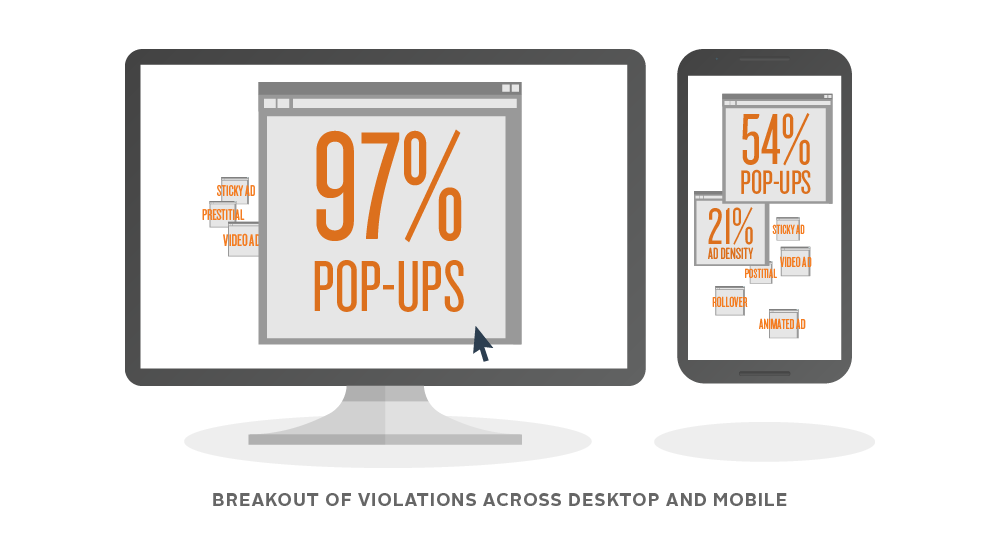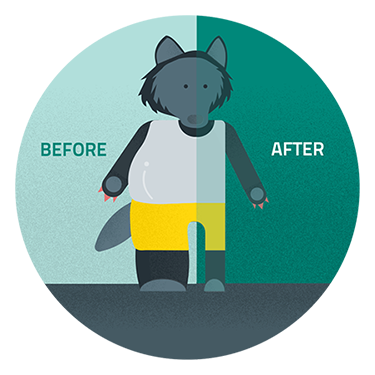Digital advertising plays an important role in making the web what it is today—a forum where anyone with a good idea and good content can reach an audience and potentially make a living. In order for this ads-supported, free web to work, it needs to be a safe and effective place to learn, create and advertise. Unfortunately, this isn’t always the case. Whether it's a one-off accident or a coordinated action by scammers trying to make money, a negative experience hurts the entire ecosystem. That’s why for the last 15 years, we’ve invested in technology, policies and talent to help us fight issues like ad fraud, malware and content scammers. Last year, we were able to remove more bad actors from our ad ecosystem than ever before, and at a faster rate.
We removed 100 bad ads per second
In 2017, we took down more than 3.2 billion ads that violated our advertising policies. That’s more than 100 bad ads per second! This means we’re able to block the majority of bad ad experiences, like malvertising and phishing scams, before the scams impact people. We blocked 79 million ads in our network for attempting to send people to malware-laden sites, and removed 400,000 of these unsafe sites last year. And, we removed 66 million “trick-to-click” ads as well as 48 million ads that were attempting to get users to install unwanted software.
New technology to better protect advertisers
Last year, we removed 320,000 publishers from our ad network for violating our publisher policies, and blacklisted nearly 90,000 websites and 700,000 mobile apps. We also introduced technology that allows us to better protect our advertisers by removing Google ads from individual pages on a website that violate our policies. Last year, we removed 2 million pages for policy violations each month. This has been critical in scaling enforcement for policies that prohibit monetization of inappropriate and controversial content. In fact, after expanding our policy against dangerous and derogatory content in April 2017 to cover additional forms of discrimination and intolerance, we removed Google ads from 8,700 pages that violated the expanded policy.
Fighting deceptive content online
Many website owners use our advertising platforms, like AdSense, to run Google ads on their sites and content and make money. We paid $12.6 billion to publishing partners in our ad network last year. But in order to make money from Google ads, you have to play by rules— that means respecting the user experience more than the ads.
Our publisher policies exist to help us maintain that balance, even as trends change online. For example, in recent years, we’ve seen the rise of scammers trying to take advantage of the growing popularity of online news to make money. We prohibit websites in our ad network from serving ads on misrepresentative content. Essentially this means that you can’t serve ads if you’re pretending to be a legitimate news website based in London when you’re actually a content scammer in a different city. In 2017, we found that a small number of publishers were responsible for the majority of these violations. Of the 11,000 websites we reviewed for potentially violating the misrepresentative content policy, we blocked over 650 of those sites and terminated 90 publishers from our network.
More frequently, we see violations of our scraping content policy. This type of policy violation occurs when bad actors try to make money as quickly as possible by copying news or content from other sites. In 2017, we blocked over 12,000 websites for “scraping,” duplicating and copying content from other sites, up from 10,000 in 2016.
Does an ad with the headline “Ellen DeGeneres adopts a baby elephant!” make you want to click on it? You’re not alone. In recent years, scammers have tried to sell diet pills and weight-loss scams by buying ads that look like sensational news headlines but ultimately lead to a website selling something other than news. We suspended more than 7,000 AdWords accounts for tabloid cloaking violations, up from 1,400 in 2016.
New policies to tackle emerging threats
We’re constantly updating our policies as we see new threats emerge. Last year, we added 28 new advertiser policies and 20 new publisher policies to combat new threats and improve the ads experience online. This year, we updated several policies to address ads in unregulated or speculative financial products like binary options, cryptocurrency, foreign exchange markets and contracts for difference (or CFDs). We also updated our gambling ads policies to address new methods of gambling with items that have real-world value (e.g., skins gambling). And we will introduce a new certification process for rehabilitation facilities, allowing legitimate addiction treatment centers to connect with people in need.
Our work to protect the ads ecosystem doesn't stop here—it's ongoing. As consumer trends evolve, as our methods to protect the open web get better, so do online scams. Improving the ads experience across the web, whether that's removing harmful ads or intrusive ads, will continue to be a top priority for us.





